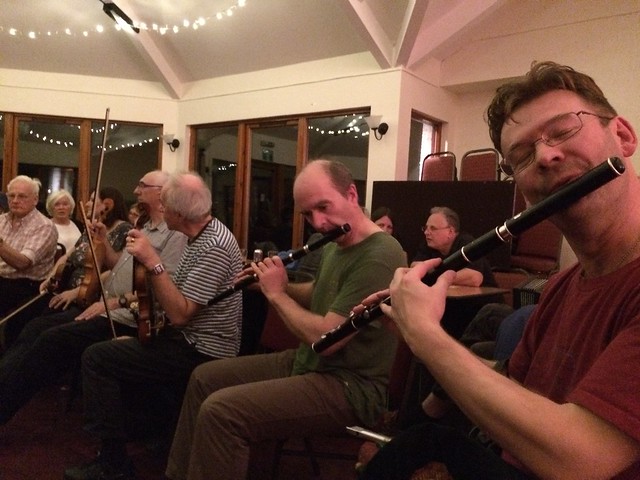
This week’s tune is a piece of mouth music that celebrates the Isle of Islay in the Inner Hebrides, famous for many things, including malt whisky. Sometimes described as a children’s song, ‘S ann an Ilè is a strathspey that shares some of the melody with The Marquis of Huntly’s Highland Fling.
I first heard this sung by Dun Creagan, a Scots-Irish band from America. Their singer Tom McKean studied Gaelic in Edinburgh and now teaches in Aberdeen. They made one CD, mostly recorded live and it is now available on Soundcloud (see the link above). Here’s the song:
I met Tom when he lived in Edinburgh and he took some of the Edinburgh session tunes back to the US where the band incorporated some of them into their repertoire. I was surprised a few years later when Rick Gagné, their whistle and banjo player was in touch in the early days of the internet to say they had recorded a composition of mine (Jane Craggs, which is also on their Soundcloud page). This was the start of a long-distance friendship in which we exchanged tunes, recordings, anecdotes and news.
Rick is wearing glasses in the Dun Creagan picture. He was a stunning whistler, equally adept on banjo and other stringed instruments as well as being a prolific composer of distinctive tunes. He was admired throughout the traditional music scene, not just for his music, but also his openness, positivity and encouragement to others. I had hoped that one day we might meet for a tune, but he sadly died earlier this year after a short illness. I have some of his compositions that he sent me and and will see if we can take a look at them in the class sometime.
Here’s another version, sung by Christina Stewart, with lyrics and translation. Our version can be found on the resources page. For a decent version of The Marquis of Huntly’s Highland Fling, see Nigel Gatherer’s version on Folk Tune Finder or within Volume 1 of his Joy of Sets series. Published in various older collections, The Fiddler’s Companion web site puts the composition of the Marquis of Huntly’s Highland Fling as possibly pre-1806 and it has a rich history, that is worth checking out. Composed by George Jenkins, it has a different B part to ‘S ann an Ìle and the Marquis’ B part became part of an Irish slide (12/8 tune).
Tunes based on Gaelic song sometimes have a long history and fiddle composers (and poets) sometimes borrowed or amended existing traditional tunes before added their names as composer to the “improved” versions. There’s no evidence that Jenkins did this, but Flings are thought to be quite old (see the Fiddler’s Companion discussion) and I wouldn’t be surprised that a tune with a simple structure such as this one turned out to have origins older than late 18thC.
Photo: Colours and Casks by Jens Mayer, some rights reserved.
 This week we covered the Laridé de Portobello, a nine-part piece for flutes, whistles and other folk instruments based on a traditional Breton two-part tune that had no name. This is a tune I have taught previously and the intention of the multiple parts is to encourage group play, improvisation and performance. With the end of a term of hard work coming up, it’s good to focus on such things.
This week we covered the Laridé de Portobello, a nine-part piece for flutes, whistles and other folk instruments based on a traditional Breton two-part tune that had no name. This is a tune I have taught previously and the intention of the multiple parts is to encourage group play, improvisation and performance. With the end of a term of hard work coming up, it’s good to focus on such things.




 Fèis Fhoirt Adult flute and whistle workshops 24-25 October
Fèis Fhoirt Adult flute and whistle workshops 24-25 October